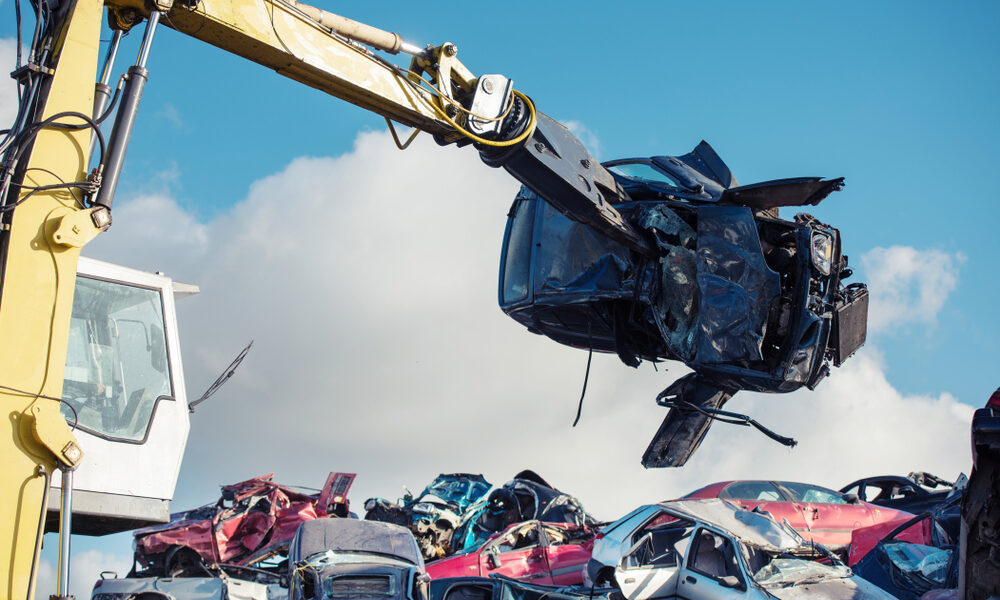Dealing with a scrap car Singapore situation requires knowledge of complex regulatory frameworks that govern the end-of-life process for vehicles in this meticulously managed city-state. As vehicles age and deteriorate, the question of responsible disposal becomes not merely a personal financial decision but a matter of collective environmental responsibility. The intersection of policy, economics, and environmental concerns creates a unique landscape for vehicle owners navigating their end-of-vehicle journey.
The Environmental Imperative Behind Vehicle Recycling
When we examine the environmental impact of vehicle disposal, the statistics paint a compelling picture:
· A single improperly disposed vehicle can leak up to 20 litres of various fluids into soil and water systems
· Nearly 75% of an average car is recyclable, including valuable metals and components
· Recycling one tonne of steel saves approximately 1.5 tonnes of iron ore and reduces CO2 emissions by 86%
“Singapore’s limited landfill capacity at Semakau makes proper vehicle recycling not just environmentally sound but an existential necessity for our sustainable urban future,” notes a senior environmental researcher at the National Environment Agency.
The concentrated nature of Singapore’s urban environment amplifies the environmental consequences of improper disposal. Unlike larger nations with vast open spaces, the environmental footprint of waste management decisions in Singapore creates immediate and visible impacts on living conditions and ecological health.
Navigating Singapore’s Regulatory Landscape
Singapore’s approach to vehicle disposal reflects its broader governance philosophy—structured, comprehensive, and meticulously enforced. The Certificate of Entitlement (COE) system fundamentally shapes how Singaporeans view vehicle ownership, creating a predetermined lifecycle for most vehicles.
The regulatory framework includes:
· Mandatory de-registration through the Land Transport Authority (LTA)
· Required surrender of vehicle registration documents and number plates
· Precise documentation of the vehicle recycling process
· Potential PARF (Preferential Additional Registration Fee) rebates for qualifying vehicles
“The regulatory system in Singapore regarding vehicle disposal represents a complex balance between encouraging renewal of the vehicle fleet for environmental and safety reasons whilst acknowledging the significant financial investment citizens make in their vehicles,” explains a transport policy specialist from the Singapore University of Social Sciences.
This regulatory ecosystem creates both obligations and opportunities, particularly regarding potential rebates that can significantly offset the financial impact of vehicle disposal.
The Economic Calculus of Vehicle Scrapping
The decision to scrap a vehicle in Singapore involves a sophisticated economic calculation that extends beyond the immediate transaction value. Consider:
· The remaining value of your COE, which can be rebated
· Potential PARF rebates based on the vehicle’s age and condition
· The rising maintenance costs of an aging vehicle
· The environmental cost-benefit analysis of replacement versus retention
For many Singaporeans, particularly those from working-class backgrounds, vehicles represent not merely transportation but significant financial investments. The depreciation and eventual disposal of these assets can have profound impacts on household economic stability.
“The economic framework surrounding vehicle disposal in Singapore disproportionately impacts different socioeconomic groups, creating varying degrees of pressure regarding timing and disposal decisions,” observes a consumer rights advocate specialising in transport economics.
Practical Steps: The Vehicle Disposal Process
When approaching the end of your vehicle’s useful life, following a systematic process ensures both regulatory compliance and optimal financial outcomes:
1. Determine eligibility for PARF and COE rebates
2. Obtain quotations from authorised scrap yards
3. Complete the de-registration process with LTA
4. Submit required documentation and surrender vehicle components
5. Receive final settlement including applicable rebates
“The process requires meticulous attention to documentation and timing, particularly regarding the submission of paperwork within the stipulated seven-day window after vehicle handover,” warns a veteran transport consultant.
Beyond Misconceptions: Understanding Value Recovery
Many vehicle owners underappreciate the remaining value in end-of-life vehicles. Beyond the obvious metal content, modern vehicles contain:
· Precious metals in catalytic converters
· Recyclable plastics and composites
· Reusable electronic components
· Recoverable rare earth elements from electronic systems
This complex material composition creates opportunities for value recovery that extend well beyond traditional scrapping concepts.
The disparities in knowledge about these recovery opportunities often create an imbalance of power between disposal services and vehicle owners. Those with industry expertise understand the true value inherent in these materials, whilst the average owner may focus solely on the immediate cash offer. This information asymmetry particularly impacts economically vulnerable communities who might benefit most from maximising the recovery value of what is often their second-largest asset.
The Broader Social Context
The disposal of vehicles in Singapore occurs within a broader social context of consumption, status, and environmental responsibility. The decisions individual owners make reflect and reinforce societal values regarding sustainability, responsible citizenship, and the balance between personal convenience and collective welfare.
Singapore’s vehicle ownership policies—particularly the COE system—create a stratified automotive landscape that mirrors other socioeconomic divisions within society. The financial barriers to vehicle ownership mean that those who do own vehicles often view them as significant status symbols and investments, complicating the emotional and financial calculus of disposal decisions.
As Singapore continues its journey toward enhanced sustainability and environmental responsibility, the systems and processes surrounding vehicle lifecycle management will inevitably evolve to reflect these changing priorities and technological capabilities.
Conclusion
The journey of vehicle ownership in Singapore has a predetermined conclusion, shaped by policy, economics, and environmental considerations. By understanding the regulatory framework, economic implications, and environmental impact, vehicle owners can make informed decisions that serve both personal and collective interests. Whether motivated by financial prudence, environmental consciousness, or regulatory necessity, familiarising yourself with the proper procedures remains essential for anyone considering using services for scrap car Singapore.

